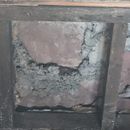Insulation Conundrum
I have an old house with a thick stone facade. The stone is at least 8 inches thick. When built(1938), they used Celotex(Homasote) for sheathing > 2 x 4 framing(real 2 x 4). I just opened all the walls in the room for new wiring and insulation and to repair any rotted wood. Attached are some pictures of areas where the Celotex is missing or completely deteriorated. Amazingly, there are many areas perfectly intact.
I was initially thinking closed cell spray foam, but there is so much conflicting information out there. Looking for some ideas? And no, Iḿ not removing the stone:)
Thanks.
GBA Detail Library
A collection of one thousand construction details organized by climate and house part












Replies
All of those areas look like they were prone to water leakage - windows, chimney / wall interfaces, and so on. I'd imagine that's why it's essentially evaporated in those areas.
There are quite a few posts that detail an inner rain screen of sorts, using foam strips tacked to the side of studs, with a foam board cap, leaving an air space between the interior surface of the stone work, and the studs, with further insulation layered on that.
It's hard to fix something like this from the inside. I had a similar issue under a bay window on my own home that's in my office, which I renovated during the pandemic. I did ask about it here, and the recommendation was basically "put it back together the usual way, weight for the exterior stone to fall off, then fix it right". What I did was to paint everything inside the stud bays with a basic primer as a sort of low-grade sealer, then I insulated with mineral wool and an interior side smart vapor retarder.
The most important thing you can do to is to get all your exterior details right to keep water out of the wall. In my case, the water was getting in from a flat window sill / trimboard that wasn't sloped away from the house, and the caulk had peeled away in some places. I fixed the caulk, and will soon replace that trim board with a beveled PVC trim board made for the purpose so that water runs away from the top of the wall under the window instead of pooling up and leaking in. I'd check that around your windows, and I'd check flashing anywhere else. Make sure everything is detailed to divert water away from the wall.
Bill
Thanks for the replies. Bill your problem, sounds like mine. I do know how the water was getting in. The siding guy that capped the windows during a remodel put a reverse pitch on the sill cover, genius.